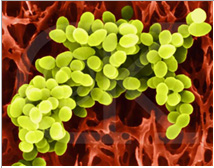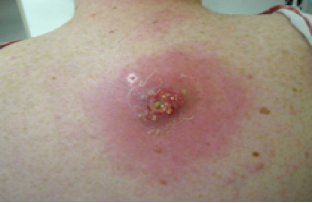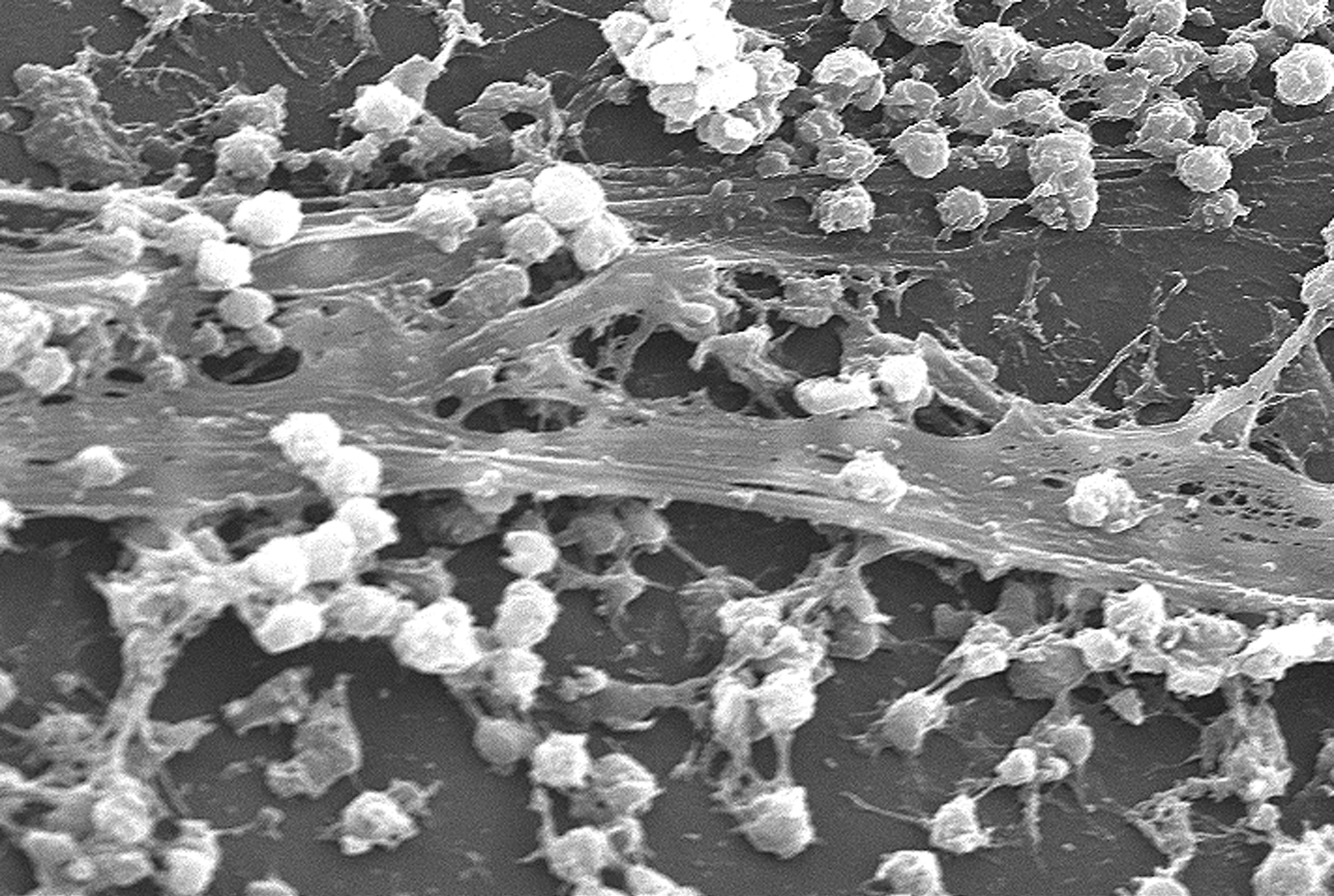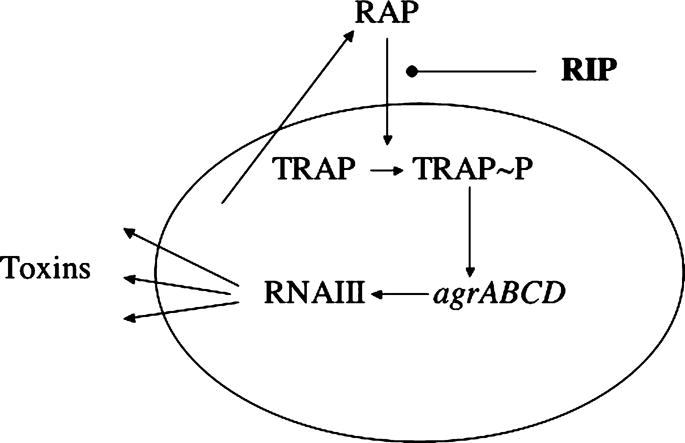Team:SDU-Denmark/Background
From 2009.igem.org

Description of S.aureus
Staphylococcus aureus, also known as golden staph, is the most common cause of staphylococ infections. It is a gram positive bacterium, that can normally be treated with penicillin, but unfortunately they have become resistant (see MRSA) ([http://www.denstoredanske.dk/Krop,_psyke_og_sundhed/Sundhedsvidenskab/Farmakologi/penicillin 1]). The nose is regarded as the major site of S.aureus carriage from where the organisms can spread to other parts of the body. About 20% of the population are long-term carriers of S. aureus. Frequently part of the skin flora and the mucosa is transiently contaminated ([http://cmr.asm.org/cgi/reprint/10/3/505?view=long&pmid=9227864 2]). Transmission of S.aureus" to surgical wound via skin carriage in patients who are nasal carriers could be an explanation for endogenous infection. In nasal carriers, the skin is often colonized by S. aureus. Preoperative disinfection may not be effective in the deeper layers of the skin, and S. aureus may thus become a source of infection during surgery ([http://cmr.asm.org/cgi/reprint/10/3/505?view=long&pmid=9227864 2]).
The ability to control staphylococcal infections in the future will depend on many factors, e.g., development of new therapeutic agents, optimization of infection control measures, and introduction of new medical devices with a reduced risk of infection ([http://cmr.asm.org/cgi/reprint/10/3/505?view=long&pmid=9227864 2]).
Pathogenesis
Staphylococcus aureus is a virulent pathogen that is currently the most common cause of infections in hospitalized patients. The success of S. aureus as a pathogen, and its ability to cause such a wide range of infections, are the result of its extensive virulence factors for example toxins. ([http://www.journals.uchicago.edu/doi/abs/10.1086/520289 3]), ([JBC Papers in Press. Published on October 16, 2000 as Manuscript M005446200 4])
S.aureus is normally considered a potential pathogen as it can cause infections, but it is also seen as a non-pathogen part of the normal flora.
S.aureus infections is plentiful and diverse. The most common infection is of the skin as impertigo, cellulitis or less frequent scalded skin syndrome ([http://www.medicinenet.com/staph_infection/article.htm 5]). If the bacteria enters the bloodstream in case of sepsis, the bacteria can spread to organs and many different serious infections can result. Moreover S.aureus infections include pneumonia, endocarditis, osteomyelitis, food poisoning and more ([http://www.medicinenet.com/staph_infection/article.htm 5]).
MRSA
Methicillin-resistant Staphylococcus aureus (MRSA) is defined as a strain of s. aureus that is resistent to beta-lactam antibiotics, which includes penicillins and the cephalosporins ([http://en.wikipedia.org/wiki/MRSA 6]).
MRSA is especially troublesome and the most common infectious agent among hospitalised patients. Patients with open wounds, invasive devices, and weakened immune systems are at great risk of infection ([http://www.cdc.gov/Features/MRSA/ 7]).
MRSA can potentially cause serious infections as blod stream infections, surgial site infections and pneumonia (see also under s.aureus) In the US invasive (i.e., serious) "MRSA" infections occur in approximately 94,000 persons each year and are associated with approximately 19,000 deaths(Klevens et al. Journal of the American Medical Association 2007;298(15):1763-1771) (8).
Antibiotics has been produced that are able to kill s.aureus. Vancomycin and teicoplanin are today uesed to treat MRSA infections. The absorption of these drugs is very low, for which reason it has to be administrated intravenously. This administration route is not optimal. Moreover new strains has been discovered that are resistant to vancomycin, called VRSA (vancomycin - resistant Staphylococcus aureus) ([http://en.wikipedia.org/wiki/MRSA 6]).
To be able to treat patients with s.aureus infections in the future, new antibiotics or new method of treatment most be found.
Biofilm Formation
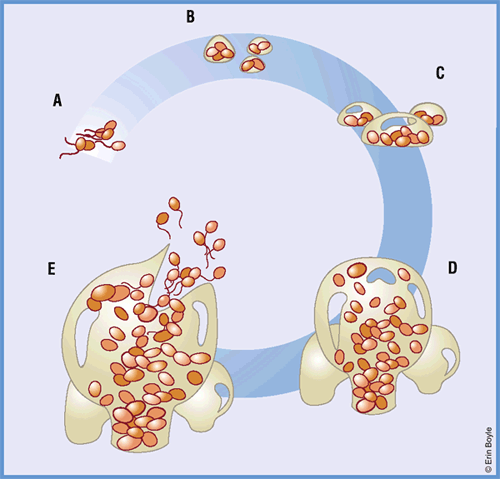
Biofilm: A layer af microbes embedded in an extracellular slime/adhesive, usually polysaccharide material excreted by the cells and attached to a surface (9).
Hospital Infections
Hospital infections, also known as nosocomial infections, is very common, with a frequency of 7-10% of hospitalised patients (in Denmark) ([http://ssi.dk/sw671.asp 11]). One third of nosocomial infections are considered preventable ([http://en.wikipedia.org/wiki/Nosocomial_infection 12]). The most common nosocomial infections are cystitis, pnemonia, postoperative wound infections and infections of intravascular catheter ([http://www.ouh.dk/wm139338 13]). S. aureus is one of the most common causes of postoperative wound infections (14).
Quorum-sensing
Quorum-sensing bacteria produce molecules, termed autoinducers, that functions as chemical signal molecules. The concentration of these signal increase as a function of the number of cells in a colony. Using this chemical signaling, the bacteria can adabt to the current situation, and as a multicellular organism synchronize their behavior. The colony of bacteria forms biofilms, that are sessile microbial communities embedded in a self-produced extracellular polymeric matrix, with the advantages described above. ([14]) The strategy is that bacteria at a low level will express protein factors that promote attachment and colonization, whereas they at lager scale will repress these genes and insted express genes of toxins and proteases, that is factors that are required for dissemination. ([15])
In S.aureus the genes involved in quorum sensing is encoded by the agr-locus (accessory gene regulator) system. ([14]) To different promoters P2 and P3 drives the two operons of the arg-locus. The P2 operon codes for a RNAII transcript, while the P3 promoter drive transcription of RNAIII. RNAIII is an inportant part of the system in that it it regulates at least 15 genes coding for potential virulence factors. (Regulation of S.aureus pathogenesis via TRAP ([15]) The synthesis of RNAIII is regulated by quorum sensing molecules. When autoinducers of the system reaches a threshold concentration RNAIII is synthesized. The described autoinducers of RNAIII is RAP (RNAIII activating protein) and the arg- encoded AIPs (autoinducing peptides) ([15])
Quenrum-quenching using RIP
The ability to disrupt quorum sensing is known as quorum quenching. Quorum quenching has a great therapeutic potential, in that interfering with the bacterial communication, we can prevent colonisation to specific pathogen bacteria, that uses quorum sensing to coordinate virulence. (17)
RNAIII synthesis can be inhibited by different mechanisms. The most potent inhibition is seen by the RNAIII inhibiting peptide (RIP). This peptide has been descriped produced by coagulase negative staphylococcus, ex S. warnerii and S. xylosus. RIP has the sequence YSPXTNF, where X can be a cysteine, a tryptophan, or a modified amino acid. Native RIP and a synthetic analogue YSPWTHF has been shoen effective in inhibiting RNAIII synthesis in vitro and S.aureus infections in vivo. (17)
Fraklip
At least four reasons undelie the formation af biofils. 1.) Biofilm are a type of defence. 2.) Biofilm formation allow cells to remain in a favorable niche. 3.) Biofilms form because they allow bacterial cells to live in close association with each other. 4.) Biofilm may be the typical way bacterial cells grow in nature (10)
Contents |
 "
"
